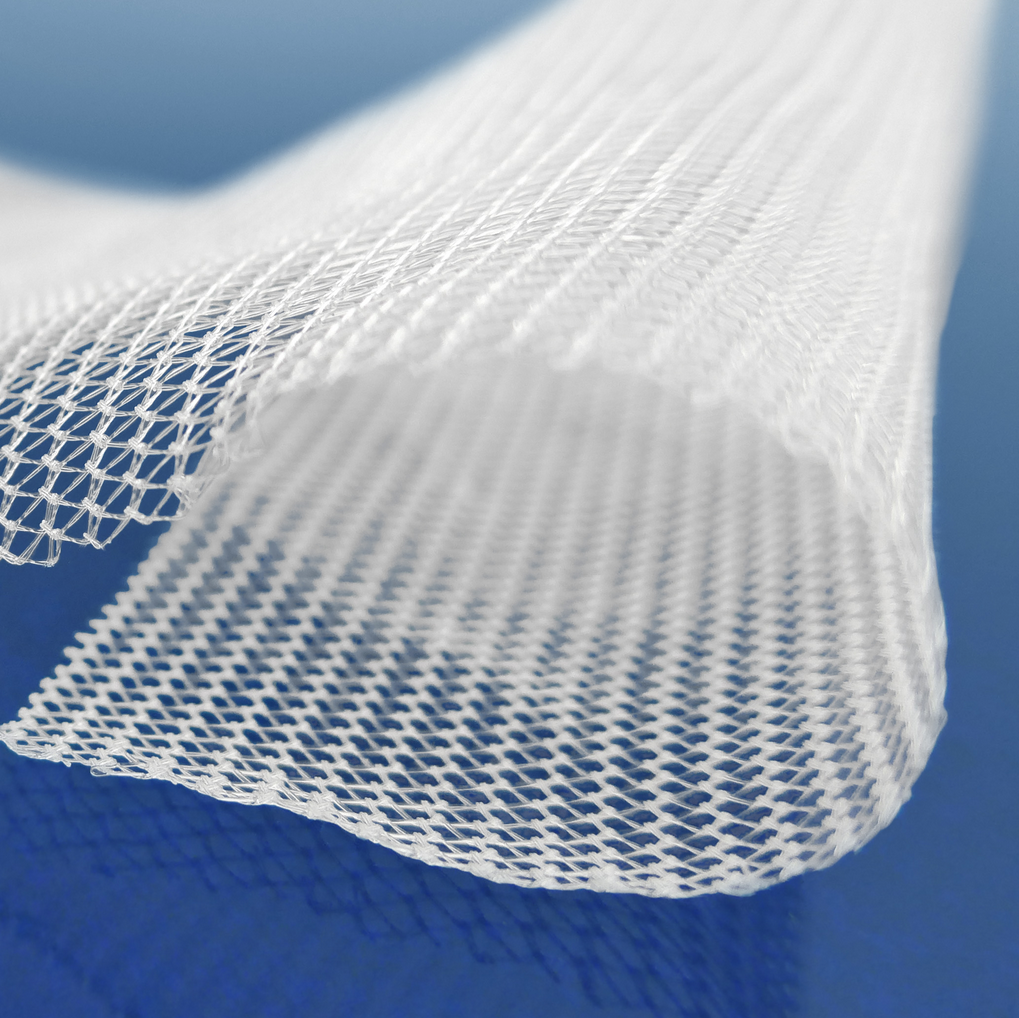Last Updated November 4, 2020
Surgical mesh devices used to repair hernias have been available for over a century in the United States and hernia repair is one of the most common surgical procedures performed today. In fact, more than 80% of hernia repairs performed in the U.S. use mesh, and, at the moment, there are more than 70 types of meshes commercially available.
It goes without saying that the hernia mesh industry is both profitable and competitive and manufacturers are incentivized to bring as many “new and improved” products to market as soon as possible. Most new hernia mesh brands are pushed through the U.S. Food and Drug Administration’s (FDA) 510(k) clearance or “fast track” process with little testing or laboratory review. Accordingly, hernia mesh devices sometimes present serious medical issues and complications for the patients into whom they are implanted.
Hernia Mesh Adhesion
Adhesions are bands of fibrous scar tissue that sometimes form following abdominal surgery. In some instances, these scars will form tissue that “sticks” or binds together inside of the body. Adhesions make normally slippery internal tissues collect together and can pull on small or large intestines causing intense pain. This condition can also form in people who develop peritonitis, an infection that spreads to the membrane covering the abdominal organs.
In cases where adhesive tissue becomes severe, bowel obstruction can result and cause cramp-like pains as well as other symptoms such as:
- Abdominal pain
- Nausea and vomiting
- Abdominal swelling
- Inability to pass gas and/or infrequent bowel movements
- Dehydration (dry skin, severe thirst, infrequent urination, swollen/dry tongue)
In cases where adhesive bowel obstruction is partial, surgery may be avoided with rehydration and insertion of a small suction tube through the nose into the stomach to prevent additional bloating. Complete bowel obstruction caused by adhesion often requires surgery to restore blood flow.
Hernia Mesh Contraction
Mesh contraction (sometimes referred to as “mesh shrinkage”) is a phenomenon that, when it occurs, usually does so within two months of being implanted in the body. It is usually characterized by a failure of the implanted mesh to adequately meld with surrounding tissue which results in the mesh no longer covering the hernia location. This often leads to the recurrence of the hernia and further surgery to retrieve the defective mesh and repair the hernia.
Hernia Mesh Migration
Mesh migration occurs when a surgically implanted mesh (typically through laparoscopic implantation) fails to adequately adhere to surrounding tissue and begins to move freely through organ cavities in the abdomen. Migration can result in serious complications for patients, such as erosion into viscous. As a consequence of erosion due to migration, infections and abscesses can form. If treatment for migration and erosion into the bowels is required, it can involve additional procedures such as laparotomy; bowel resection; mesh resection/removal, or anastomosis; followed by another procedure to repair the original hernia.
Hernia Mesh Fistula
Abdominal fistulas can form when a defective hernia mesh fails to properly adhere to surrounding tissue or “erodes” into the gastrointestinal tract. The mesh can cause an abnormal connection between internal organs and the intestines creating fluid leakage into body cavities (or even through the skin). Depending upon the location of the leakage, fistulas may cause diarrhea or poor absorption of nutrients and dehydration. Other fistulas may manifest no symptoms at all and even close on their own after a few weeks or months.
Physicians will ordinarily seek to locate a fistula using barium tracers, CT scans, and fistulograms to closely examine the stomach, bowels, or other areas of the abdomen. Treatment for fistulas may involve antibiotics; immunosuppressants; surgery or intravenous nutritional supplements.
Bowel Perforation Following Hernia Mesh Implantation
Hernia mesh migration and/or erosion can sometimes result in direct trauma to the bowels in the abdomen known as “perforation”. A perforation is a hole that can develop anywhere in your gastrointestinal tract between your throat and your rectum. When that hole or puncture occurs on your large intestine, it is a “bowel perforation”. A perforated bowel can cause the contents of the bowel to spill into your abdomen resulting in an infection known as peritonitis and eventually a more deadly condition known as “sepsis”. Common signs of a perforated bowel are:
- Severe stomach pain
- Chills
- Fever
- Nausea
- Vomiting
Bowel perforations are considered a medical emergency and physicians will seek to treat them immediately by first running X-rays and bloodwork to determine if an infection has developed. Next surgeons will work to repair the perforation. In some cases, the surgeon will perform an ileostomy or colostomy to empty the contents of the bowel while allowing the tissue to heal.
Sources Cited (28)
1) “Is surgical mesh safe for my hernia surgery?” https://www.ucihealth.org/blog/2018/06/mesh-hernia-repair
2) “Two cases about mesh adhesion to intra-abdominal cavity tissue after using mesh to repair an incisional hernia” https://www.ncbi.nlm.nih.gov/pmc/articles/PMC5648932/
3) “Degree of Adhesions After Repair of Incisional Hernia” https://www.ncbi.nlm.nih.gov/pmc/articles/PMC3041039/
4) “Prevention of adhesions to polypropylene mesh in a traumatized bowel model” https://www.journalacs.org/article/S1072-7515(00)00337-9/fulltext
5) “4 Best Ways to Take Control of Abdominal Adhesions” https://health.clevelandclinic.org/4-best-ways-to-take-control-of-abdominal-adhesions/
6) “Relationship between tissue ingrowth and mesh contraction” https://pubmed.ncbi.nlm.nih.gov/15977079/
7) “Are you aware of these dangerous complications from hernia mesh implants?” https://wsbt.com/sponsored/foley-small/are-you-aware-of-these-dangerous-complications-from-hernia-mesh-implants
8) “Relationship Between Tissue Ingrowth and Mesh Contraction” https://www.researchgate.net/publication/7766806_Relationship_Between_Tissue_Ingrowth_and_Mesh_Contraction
9) “Enterocutaneous fistula due to mesh fixation in the repair of lateral incisional hernia: a case report” https://www.ncbi.nlm.nih.gov/pmc/articles/PMC2613897/
10) “Chronic Infection and Enterocutaneous Fistula Secondary to Mesh Migration and Erosion into the Small Bowel” https://www.liebertpub.com/doi/full/10.1089/crsi.2017.0003?mobileUi=0&
11) “Enterocutaneous Fistula” https://herniacenter.ucsf.edu/conditions–procedures/enterocutaneous-fistula.aspx
12) “A Rare Complication of Composite Dual Mesh: Migration and Enterocutaneous Fistula Formation” https://www.hindawi.com/journals/cris/2015/293659/
13) “Mesh fistula after ventral hernia repair: What is the optimal management?” https://www.sciencedirect.com/science/article/abs/pii/S0039606019306786
14) “Management of post-operative complications in open ventral hernia repair” https://parjournal.net/article/view/3272
15) “Enterocutaneous fistula secondary to mesh erosion of bowel: a late complication of polypropylene mesh use in ventral hernia repair” https://www.ijsurgery.com/index.php/isj/article/view/4976
16) “Mesh migration into the sigmoid colon after inguinal hernia repair presenting as a colonic polyp: A case report and review of literature” https://www.ncbi.nlm.nih.gov/pmc/articles/PMC6212604/
17) “Mesh migration – Should it be a mandatory consentable complication?” https://www.ijcrisurgery.com/archive/article-full-text/100057Z12PP2019
18) “Asymptomatic migration of ventral mesh for incisional hernia into the small intestine: A case report” https://onlinelibrary.wiley.com/doi/full/10.1002/ccr3.2212
19) “Severe complications after mesh migration following abdominal hernial repair: report of two cases and review of literature.” https://europepmc.org/article/pmc/pmc6545489
20) “Mesh penetrating the cecum and bladder following inguinal hernia surgery: a case report” https://jmedicalcasereports.biomedcentral.com/articles/10.1186/s13256-017-1435-8
21) “Mesh Infection and Migration after Umbilical Hernia Repair” https://www.researchgate.net/publication/276002819_Mesh_Infection_and_Migration_after_Umbilical_Hernia_Repair
22) “Intestinal perforation after surgical treatment for incisional hernia: iatrogenic or idiopathic?” https://www.ncbi.nlm.nih.gov/pmc/articles/PMC5917326/
23) “Acute abdomen in the centenary patient, mesh migration into the sigmoid colon after laparoscopic inguinal hernia repair (TAPP): A case report and review of literature” https://www.sciencedirect.com/science/article/pii/S2210261219306844
24) “CT findings of complications after abdominal wall repair with prosthetic mesh” https://www.sciencedirect.com/science/article/pii/S2211568417300037
25) “Long-term Complications Associated With Prosthetic Repair of Incisional Hernias” https://jamanetwork.com/journals/jamasurgery/fullarticle/211564
26) “Abdominal Adhesions” https://www.health.harvard.edu/a_to_z/abdominal-adhesions-a-to-z
27) “Gastrointestinal fistula” https://www.mountsinai.org/health-library/diseases-conditions/gastrointestinal-fistula
28) “Chronic abdominal pain secondary to mesh erosion into cecum following incisional hernia repair: a case report and literature review” https://www.ncbi.nlm.nih.gov/pmc/articles/PMC3959323/#:~:text=Mesh%20migration%20following%20hernia%20repair,are%20the%20most%20common%20sequelae.


